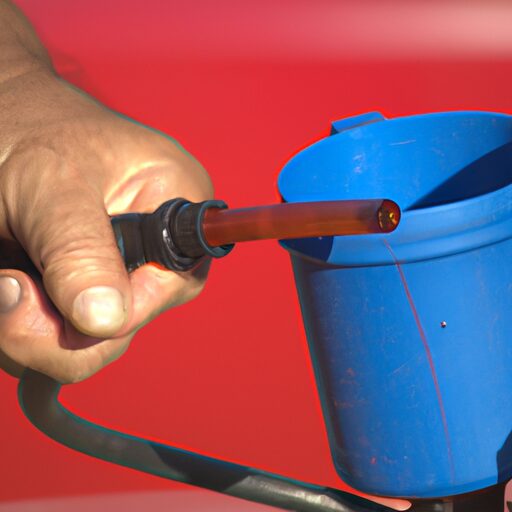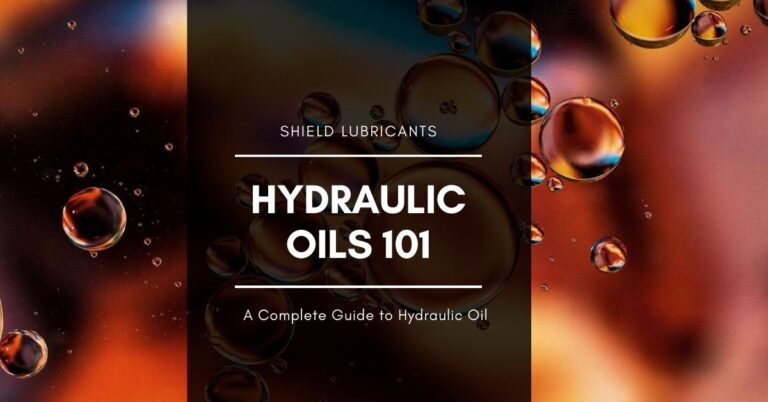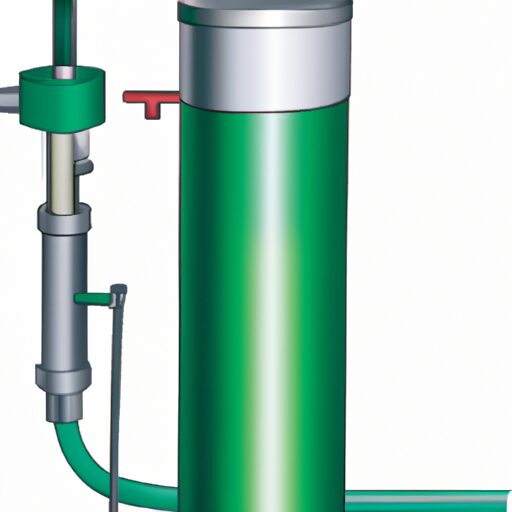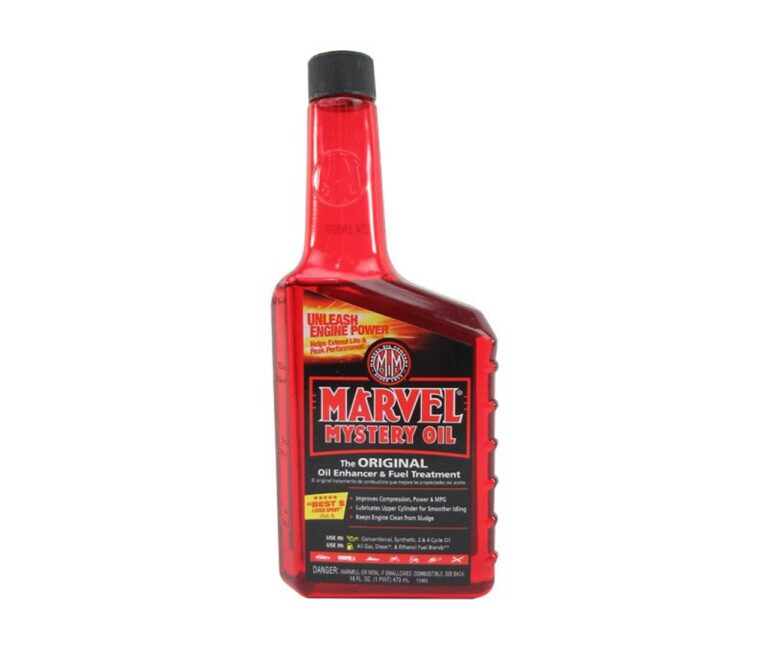How To Add Hydraulic Fluid To A Bottle Jack
This article aims to provide a comprehensive guide on the process of adding hydraulic fluid to a bottle jack. Hydraulic jacks are commonly used for lifting heavy objects, and ensuring that they are properly maintained is essential for their efficient functioning. The focus of this article will be on the technical aspects involved in performing this task with precision and accuracy.
The step-by-step instructions provided will enable readers to gather the necessary tools and materials, locate the hydraulic fluid reservoir, clean both the reservoir and jack, remove the filler plug, add the hydraulic fluid carefully, replace the filler plug securely, and finally test the jack to ensure its proper functioning. Additionally, regular maintenance practices and fluid checks will also be discussed as part of maintaining optimal performance.
By following these detailed guidelines, readers will gain a thorough understanding of how to add hydraulic fluid to a bottle jack effectively and efficiently.
Gather the Necessary Tools and Materials
To begin the process of adding hydraulic fluid to a bottle jack, it is essential to gather the necessary tools and materials. Firstly, one must choose the right hydraulic fluid for their specific bottle jack. It is crucial to consult the manufacturer’s instructions or manual to determine the correct type and viscosity of hydraulic fluid required. Using an incorrect fluid can lead to malfunctions and damage to the equipment.
Additionally, it is important to have a clean cloth or rag on hand to wipe any spills or excess fluid during the process. A small funnel will also be needed in order to pour the hydraulic fluid into the reservoir accurately without spilling.
Understanding common problems with bottle jacks can aid in selecting appropriate tools and materials. For instance, leaks may occur due to worn-out seals or damaged parts. In such cases, having replacement seals or repair kits readily available can be beneficial.
With these necessary tools and materials gathered, one can proceed to locate the hydraulic fluid reservoir. This pivotal step allows for easy access when adding hydraulic fluid and ensures a smooth continuation of this maintenance process.
Locate the Hydraulic Fluid Reservoir
Positioned at the base of the mechanical device, there exists a concealed compartment housing the vital substance responsible for its optimal functioning. This compartment is none other than the hydraulic fluid reservoir of a bottle jack. Before attempting to add hydraulic fluid, it is crucial to first locate this reservoir. Typically, it can be found near the top of the jack’s cylinder or on its side.
To ensure that the bottle jack operates smoothly and efficiently, it is important to regularly check the fluid level in the reservoir. Signs of low fluid include sluggish or uneven lifting and lowering of loads, as well as unusual noises during operation. If any of these symptoms are observed, it is necessary to replenish the hydraulic fluid.
Now that you have located the reservoir and assessed whether additional hydraulic fluid is required, let us move on to cleaning this essential component and ensuring its longevity in the subsequent section about ‘cleaning the reservoir and jack’.
Clean the Reservoir and Jack
Located at the base of the mechanical device, the reservoir and jack can be cleaned to ensure optimal performance and durability. Proper maintenance includes regular cleaning to remove dirt, debris, and any other contaminants that may accumulate over time. Cleaning the reservoir and jack not only helps prevent potential damage but also allows for a smooth functioning of the bottle jack.
To clean the reservoir and jack, start by wiping down the external surfaces with a clean cloth or rag. Be sure to remove any loose dirt or grime that may have accumulated on these parts. Next, use a mild detergent solution or hydraulic fluid cleaner to clean the internal components of the reservoir. Gently scrub with a soft brush to dislodge any stubborn residue.
Additionally, it is important to inspect for any signs of wear or damage during this cleaning process. Look out for leaks, cracks, or excessive corrosion that may indicate underlying issues. Troubleshooting common problems such as loss of hydraulic pressure or slow operation can also be addressed during this cleaning process.
Having thoroughly cleaned and inspected the reservoir and jack, you can now proceed to remove the filler plug in order to add hydraulic fluid into your bottle jack effectively.
Remove the Filler Plug
By removing the filler plug, one can ensure proper maintenance and functionality of the bottle jack. The filler plug is a crucial component that allows for the addition of hydraulic fluid to the jack’s reservoir. It is important to use the correct type of hydraulic fluid when refilling the reservoir. Using an incorrect type of fluid can lead to reduced performance and potential damage to the jack’s internal components.
When removing the filler plug, there are certain common mistakes that should be avoided. Firstly, it is essential to clean around the plug before attempting its removal to prevent any dirt or debris from entering into the reservoir. Secondly, one should avoid using excessive force while unscrewing or removing the plug as this can cause damage to its threads or surrounding surfaces. Thirdly, it is advisable not to over-tighten or cross-thread the plug during reinstallation as this may result in leakage.
In summary, properly removing and reinstalling the filler plug ensures that contaminants are kept out of the system and that hydraulic fluid can be added efficiently. This step sets up for a successful process in adding hydraulic fluid without any complications or issues arising.
Add the Hydraulic Fluid
To ensure proper functioning and maintenance of the bottle jack, it is necessary to fill the reservoir with the appropriate lubricating substance. Adding hydraulic fluid to a bottle jack involves following a systematic procedure to ensure optimal performance. Firstly, check the manufacturer’s instructions or user manual for specific information regarding the type and quantity of hydraulic fluid required for your particular bottle jack model.
Once you have obtained the correct hydraulic fluid, begin by removing the filler plug, as discussed in the previous subtopic. Afterward, locate the fill port on top of the reservoir and carefully pour in the hydraulic fluid until it reaches the recommended level. To assist with this process, refer to the table below:
| Bottle Jack Model | Hydraulic Fluid Type | Recommended Quantity |
|---|---|---|
| Model A | Type X | 1 pint |
| Model B | Type Y | 2 quarts |
| Model C | Type Z | 1 gallon |
After adding the hydraulic fluid, it is important to bleed any air that may have entered during filling. This can be done by operating the jack several times without any load until all air bubbles are expelled from its system.
In conclusion, by properly adding hydraulic fluid and bleeding air from your bottle jack, you can avoid common issues associated with inadequate lubrication. The next step involves replacing the filler plug and testing your jack’s functionality before use.
Replace the Filler Plug and Test the Jack
Replacing the filler plug and conducting a functionality test are crucial steps in ensuring the proper operation of the bottle jack. After adding hydraulic fluid to the jack, it is important to check for any leaks before proceeding. This can be done by visually inspecting all connections and seals for any signs of leakage. Additionally, it is recommended to wipe down the exterior of the jack to remove any excess fluid that may have spilled during the filling process.
Once the leak check has been completed and no issues are found, it is time to test the jack’s lifting capacity. To do this, place a load that is within the manufacturer’s specified weight limit on top of the saddle or lifting pad. Slowly pump the handle up and observe whether or not the load is being lifted smoothly and evenly. If there are any unusual noises or if the load does not lift properly, stop using the jack immediately.
In conclusion, replacing the filler plug and conducting a functionality test help ensure that your bottle jack operates correctly. Checking for leaks and testing its lifting capacity are vital steps in maintaining safety while using this equipment. Moving forward into regular maintenance and fluid checks will further prolong its lifespan without compromising performance.
Regular Maintenance and Fluid Checks
Regular maintenance and fluid checks are essential for ensuring the optimal performance and longevity of a bottle jack. One crucial aspect of regular maintenance is checking the hydraulic fluid levels. The hydraulic fluid serves as the medium through which pressure is transmitted in the jack, allowing it to lift heavy loads. Therefore, maintaining an adequate level of hydraulic fluid is vital for the proper functioning of the equipment.
To check the hydraulic fluid level, start by locating the filler plug on the side or top of the jack cylinder. Remove this plug using a wrench or socket set, being careful not to damage it. With the plug removed, inspect the fluid level by visually observing whether it reaches up to the fill hole. If necessary, add more hydraulic fluid until it reaches just below or at the fill hole.
Another important aspect of maintaining a bottle jack is using the correct hydraulic fluid. Using an incompatible or incorrect hydraulic fluid can lead to reduced performance and potential damage to internal components over time. It is crucial to consult with manufacturer guidelines or product documentation for specific recommendations regarding suitable hydraulic fluids for your particular model of bottle jack.
By regularly checking and maintaining appropriate levels of hydraulic fluid in your bottle jack, you can ensure its optimal performance and extend its overall lifespan while minimizing potential risks associated with inadequate lubrication or improper use of fluids.
Frequently Asked Questions
How often should I check the hydraulic fluid levels in my bottle jack?
Regularly checking and maintaining proper hydraulic fluid levels in a bottle jack is crucial for its efficient operation. Understanding the importance of regular hydraulic fluid checks ensures optimal performance and prevents potential damage or malfunctioning of the equipment.
Can I use any type of hydraulic fluid for my bottle jack?
The compatibility of hydraulic fluid for bottle jacks varies, and it is crucial to use the recommended type. Best practices for adding hydraulic fluid include ensuring cleanliness, using a funnel, and following manufacturer guidelines for proper filling procedures.
What are the signs that indicate my bottle jack needs hydraulic fluid?
Signs that indicate a bottle jack needs hydraulic fluid include slow or uneven lifting, leaking oil, and difficulty maintaining pressure. These signs suggest potential issues with the seal or internal components of the jack.
Can I use water or any other substitute for hydraulic fluid in my bottle jack?
Using water or any other substitute for hydraulic fluid in a bottle jack is not recommended. Water lacks the necessary properties to provide the required lubrication and pressure, leading to potential damage and safety risks. It is best to use the recommended hydraulic fluid for optimal performance.
Is it necessary to bleed the air from the bottle jack after adding hydraulic fluid?
The bleeding procedure is necessary to remove any air trapped in the bottle jack after adding hydraulic fluid. This step is important as it ensures optimal performance and prevents potential damage or malfunction of the jack.
Conclusion
To conclude, adding hydraulic fluid to a bottle jack requires careful attention to detail and adherence to proper maintenance practices. By following the steps outlined in this article, one can ensure the efficient functioning of their jack and prolong its lifespan. Regular maintenance and fluid checks are crucial for optimal performance. As the saying goes, "A well-oiled machine is a testament to meticulous care." So remember, keep your bottle jack properly lubricated for smooth operations.





